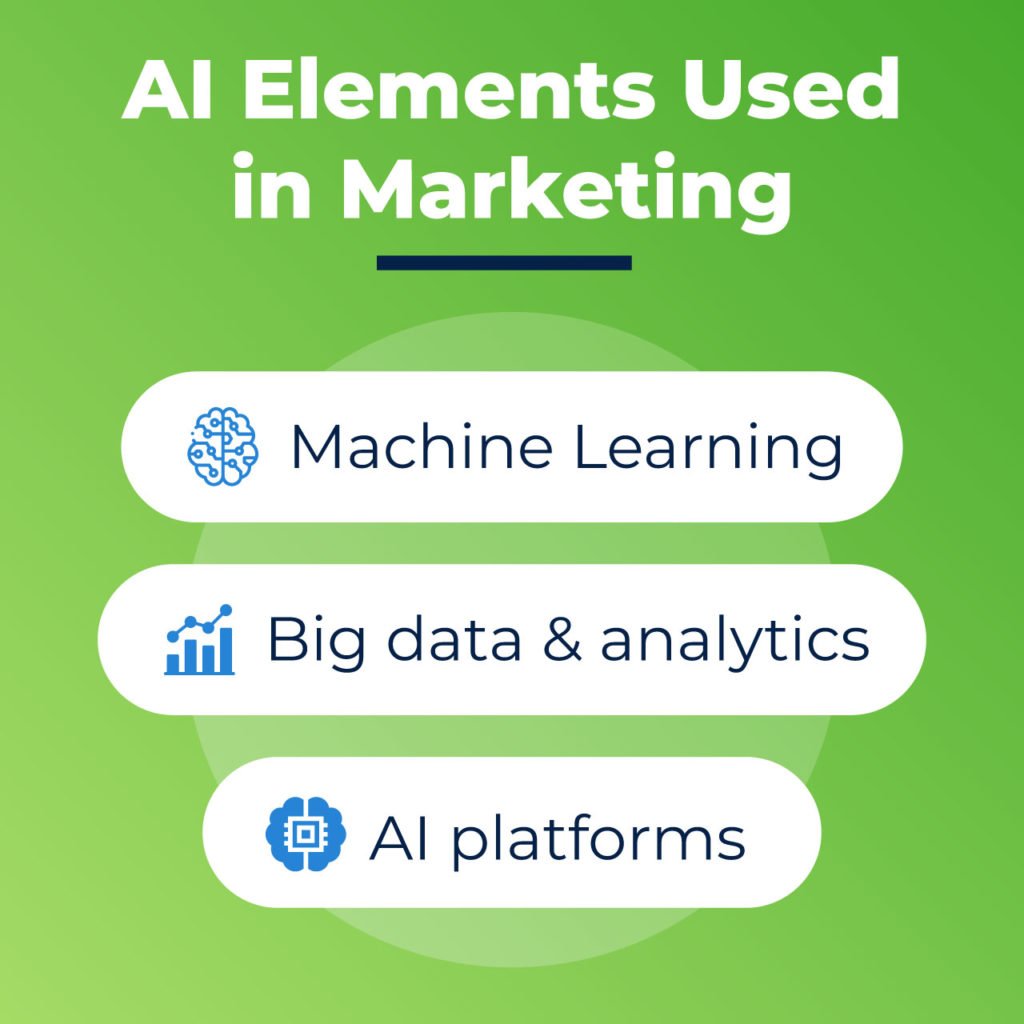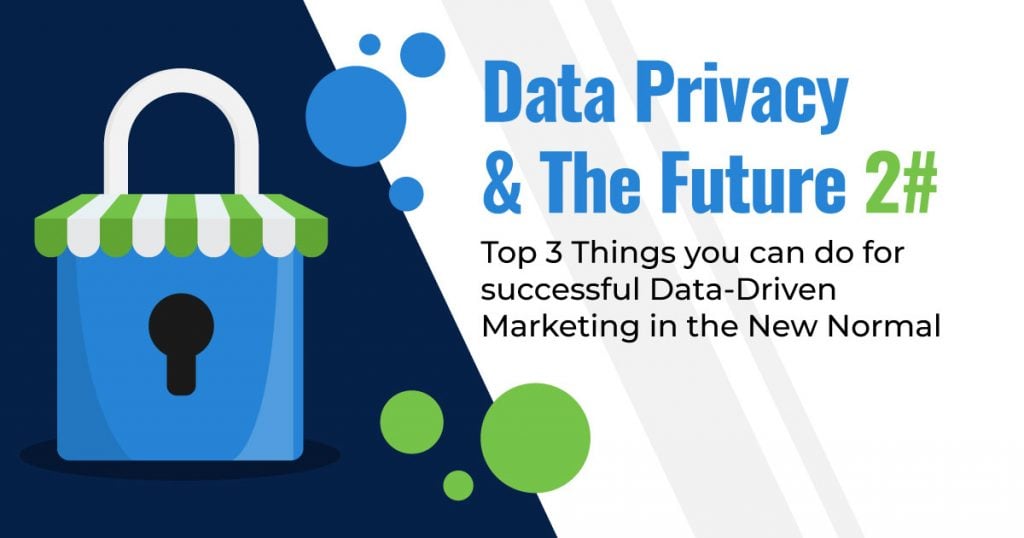Are you stuck on how to implement successful data-driven marketing techniques in the new normal? If you have been using your gut instincts to make marketing decisions, then you need to join the 76% of marketers that rely on data analytics. Without precise data to make good bets with your marketing budget, you’re effectively flying blind.
Did you read our article on the “Problems with the Current Data-Driven Marketing Landscape”? It’s a good place to start figuring out why you might have been falling short of your goals. Don’t give up on data-driven marketing because it has the power to increase marketing spend ROI by 5-8x.
In this article, we will examine 3 practical strategies that you can implement today. They might be the missing ingredient to supercharge your precision-marketing campaign to new heights.
1. Invest in Tech that Learns at Scale
The volume of data to analyze and make sense of can be overwhelming. Consider the potentially hundreds or thousands of data points that you can harvest about customers and your industry. Finding correlations that lead to profitable insights would require countless employees working long hours. Fortunately, there is an alternative that’s constantly improving and can do the work much faster.
Artificial Intelligence Tech
The speed at which recorded data is analyzed and put into action is vital in the modern constantly changing landscape. Sitting on data for weeks or months can make it obsolete. Artificial Intelligence tech quickly processes huge data volumes, helping you leverage it quickly, in real-time. As an added bonus, AI can also learn from the data and get better at predicting potential outcomes (thus reducing your overall marketing costs, including, but not limited to A/B testing).
Here are the 3 components of AI marketing you need to know about:

- Machine learning: the machine learning process is powered by Artificial Intelligence. What does this mean? That information is analyzed by powerful computer algorithms, which improve as they gain experience. Over time the system can make more accurate predictions, which leads to higher ROI.
- Big data and analytics: marketers struggle understanding big data because of complexity and inaccuracies. Whereas, AI tech can process the data faster and make meaningful connections between different variables.
- AI platforms: marketers that have taken the plunge and are using AI platforms, see them as an essential tool in their arsenal. In fact, 58% of marketers shared that utilizing technology improved the quality of the data they are using. Therefore, the insightful marketing predictions about where to spend money improves the chances of a healthy ROI.
Getting Started with AI Tech & Ad Tech
Marketing teams unfamiliar with AI could start with rule-based applications and gradually increase how much AI plays a role in your processes. Ideally, AI tech will not hinder decision-making or introduce errors into workflows. That’s why gradual implementation is the risk-averse route.
Wondering how AI tech works in practice? Stitch Fix uses a clothing selection AI that helps provide a personalized shopping experience. The machine learning framework uses customer data and feedback to make accurate predictions. Furthermore, the team asked customers to select from Style Shuffle photos, which provided even more data for the machine learning process to work with.
Data Privacy Issues
By now you get the idea that more data for AI tech to devour means better predictions. However, marketers are having to jump over additional hoops to capture data legally. But it’s not just the lawmakers they have to work with – 69% of customers share that they are concerned about how personal data is collected.
The good news is that many customers are willing to give away data if it leads to personalization and a better quality of service. Therefore, being upfront about how you collect data and why will go a long way towards earning trust with your target market.
2. Cut Down on Unproductive Areas
The unprecedented shift in eCommerce caused by the pandemic has significantly changed the landscape. Customers are shopping through alternative channels, responding to advertisements differently and the needs of some have changed. The marketers that are stuck in their old ways have unfortunately found that the old tricks of the trade are not winning against adapting competitors.
Part of the puzzle is figuring out what no longer works, which can be tricky but doable with the right approach.
Harvest Fresh and Improved Data
AI technology is only as good as the data that it feeds on. Strip out data that is old and not relevant to cut down on the background noise. Also, marketers need to harvest a wide range of data that goes beyond behavioral trends. It includes customer mobility and governmental data.
Thinking out of the box and using sophisticated data correlation algorithms means marketers can make conclusions that provide valuable insights. For example, a retail chain had the smart idea to harvest cell phone data to see how customers were interacting with competitors in the local area.
They discovered that newly acquired customers during the pandemic were coming from more expensive specialty stores, while customers they were losing moved to cheaper stores in the area. The data was used to offer their more expensive products to new customers and provide budget deals to customers that are leaving.
Don’t collect data that you are never going to use. More data means you have a higher chance of running into privacy issues. Why waste energy trying to fight access for data that will never be used for making marketing predictions? Cutting out unused data saves money and resources, which is perfect for marketing teams with a limited budget (and, frankly, everyone else too).
Dump Fruitless Marketing Campaigns
Cutting down on poorly performing campaigns can help reduce marketing waste and frees up funds to invest into analytics and attribution (as this will help you know exactly the journey that converts your buyer persona). You need to take stock of how the pandemic has affected your campaign performance.
Traditional channels such as programmatic displays, TV advertising, and event sponsorships might not be worth the effort in your industry. Don’t be surprised if marketing campaigns that provided a positive ROI for years are failing to be profitable after the pandemic. Leave no stone unturned and you will cut a lot of waste.
3. Agile Marketing & Remote Employees
The pandemic has caused employees in many industries to work remotely. In fact, before the pandemic, 20% of people worked from home and the figure went up to 71% since then. Also, 54% of employees show an interest in working from home once the pandemic ends.
It means remote working is here to stay and companies need to adapt. Remote marketing teams that are not set up properly are not fast enough to implement data-driven strategies. Physical war rooms have morphed into virtual ones, which negates the positive aspects of working closely with other team members. However, with the right approach agile marketing is still possible in a remote infrastructure.
Tips For Improving Remote Work Productivity
- Additional points of contact: the methods of communication for some teams may not fit the agile marketing model. Adding points of contact is a smart idea to provide options. For example, you could encourage video sprint-check-ins, where people provide fast updates.
- Collaboration tools: the market is flooded with collaboration tools that teams can use to create productive workflows and improve communication. Cloud-based platforms enable employees to view updates in real-time. You’re effectively communicating with the entire team when performing a single action. It’s a good investment because online collaboration tools can scale up productivity by 30%.
- Communication intervals: slow remote work teams suffer from poor communication. If you have to wait days for a scheduled meeting before you can share an idea, then implementation is slow. Also, campaign performance should be assessed at short intervals. It allows decision-makers to spot what’s working and failing sooner. Therefore, constant adjustments are possible to steer the ship in the right direction.
A smooth onboarding process is required for new team members to get up to speed and integrate with the rest of the team. Also, digitizing the onboarding process helps reduce the required resources of acquiring new employees.
Buckle Up & Prepare for the Worst
Effective remote work processes are set up to function properly when things go wrong or something unexpected happens. For example, let’s say a key team member is not able to attend a meeting but needs to know what was discussed. The solution would be to record the meetings with accurate timestamps. The absentee could easily look at the relevant sections of the meeting to catch up.
What if the meeting participants are in different time zones? The scheduling process should include timezone information. Imagine having to wake up at 3 am to attend an important meeting. Not your idea of a flexible home working environment, right?
Final Thoughts
The new normal of data-driven marketing is an exciting time. There is a lot to learn and adapting is going to be key to beating the competition. Choose the right strategy and you don’t have to fight over the same group of customers. By utilizing sophisticated data analysis algorithms you can spot new trends and gaps in the market that uncover opportunities.
So what are you waiting for? Start implementing the ideas in this article to reap the rewards of highly profitable marketing campaigns. Not sure how to put the ideas into practice? Then consider reading our article on the “Examples of successful data-driven marketing”.



